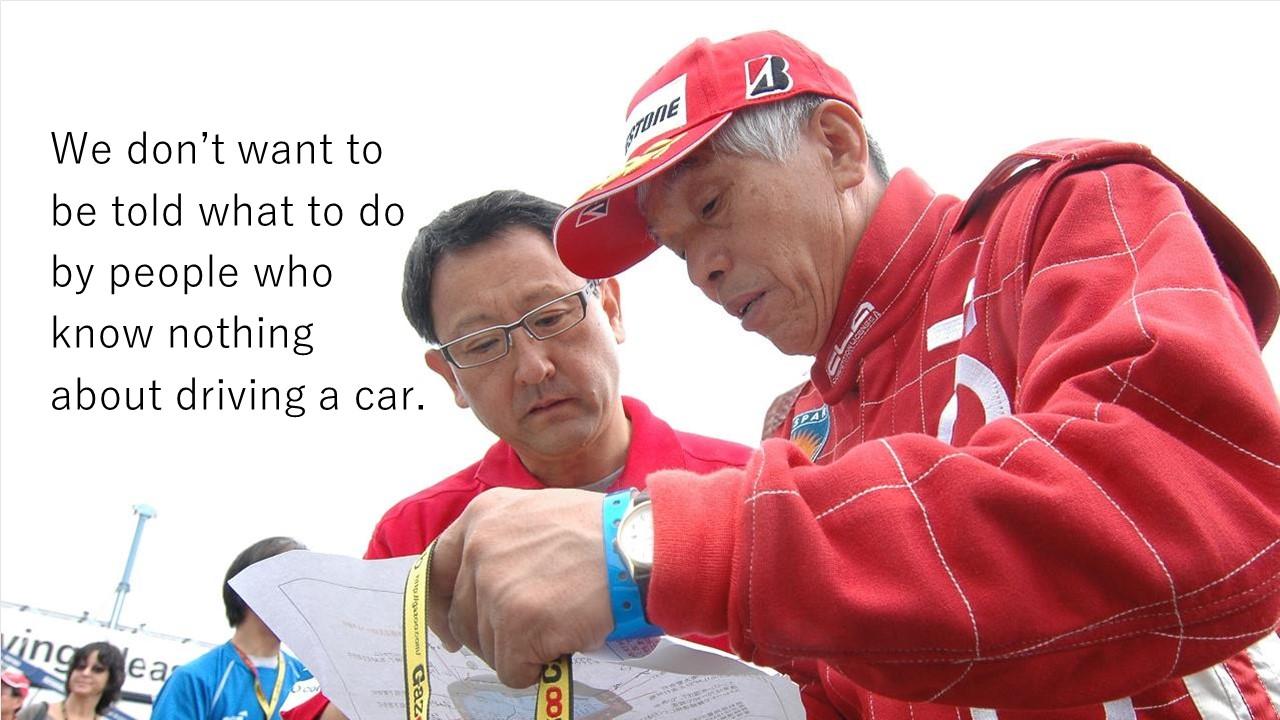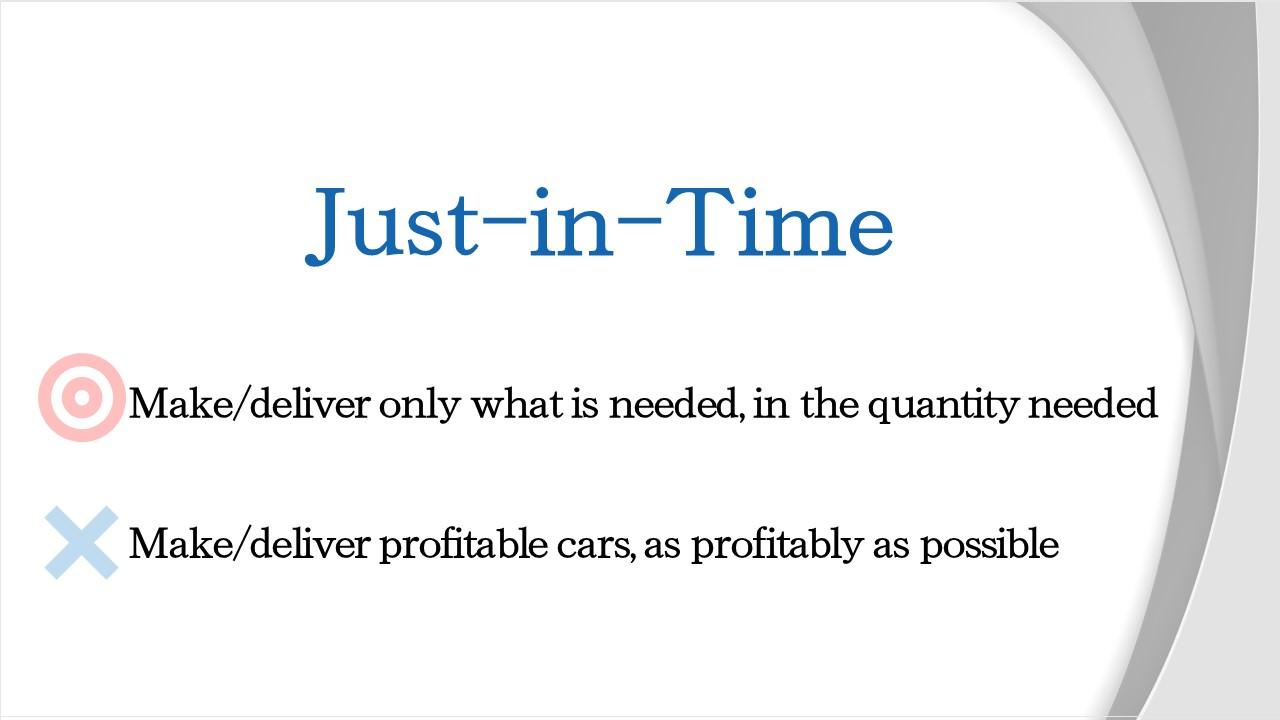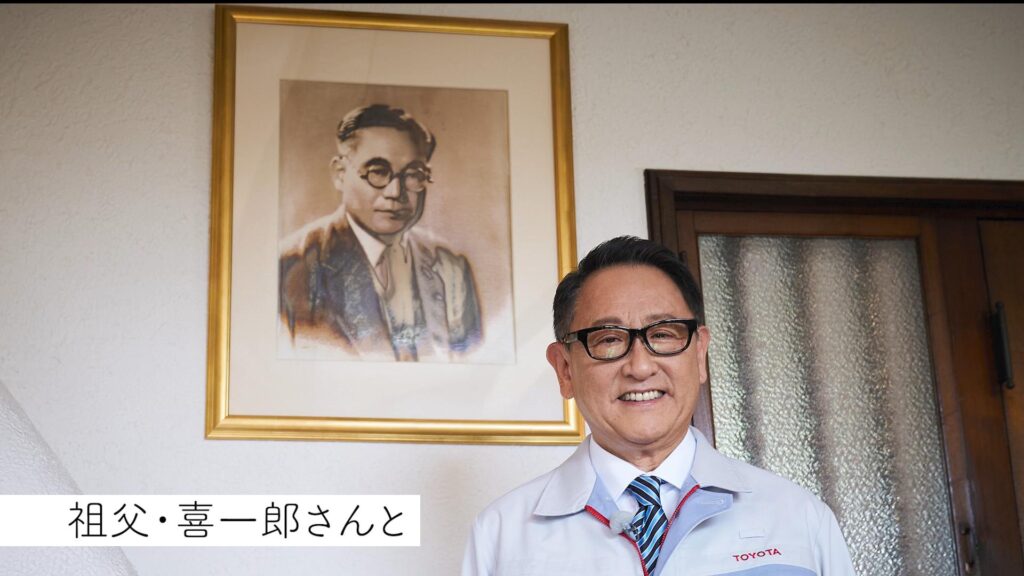On several occasions, Akio Toyoda said, “I am the president nobody wanted.” One of these occasions was his last General Shareholders Meeting in 2023:
My enemy was corporate culture that had forgotten how to be Toyota, and what I tried to protect was the genba and Toyota’s future.
So something in the culture of Toyota had become toxic in the eyes of Toyoda in the years before he became president in 2009.
In my previous post, I wondered if Toyota has lost its way because they abandoned referring to the Toyota Way in their annual reports since 2020. Quite shocking to discover that, in the eyes of Toyoda, Toyota had lost its way years before.
Initially, I was the president no one wanted, but in Toyota’s long history, perhaps such a president was needed.
He got very emotional when he thanked the shareholders for their support:
The decisions I made often went against the currents of time and the conservative mainstream of Toyota. I was able to go forward even when going against the flow because of shareholders with a mid to long-term outlook who supported Toyota and myself.
The warm messages supporting Toyota and Morizo written in the voting forms, the indirect support through the warm looks and applauses you gave, helped push me and got me this far.
Thank you all so very much.
It was all a fight
On January 13th, 2023 Akio Toyoda gave a lecture to 200 corporate managers and executives during the general meeting of the NPS Management Institute.
I’ve never spoken this frankly about all of this. It was all a fight.
Below is an abstract from his lecture.
Who am I?
The first question Toyoda addresses is “Who am I?” the question that seems to start a spiritual journey in almost every tradition.
I always felt like I had Toyota superimposed on me, and I was branded a founder’s trust fund baby. The Toyota Prince. I wondered, who am I? The question continued to grow ever larger within me. If I couldn’t get away, I might as well face Toyota head-on. Perhaps I could find some clues as to who I truly was. That was my mindset when I decided to join Toyota.

Akio Toyoda had a rough start at Toyota.
My then-president father said, “No one will want you working under them.” When I joined, it was exactly as he said. If you came close to me, people said you were just trying to impress the president’s son, nor could they discipline me strongly as I might report them to my father.
I think I was a troublesome existence for the people at Toyota. I had become someone that no one wanted anything to do with, an untouchable.
First encounter with cultural walls
I moved to domestic sales in 1992 and became an area manager for dealerships. I couldn’t believe what I saw there. While the production genba worked hard to shorten lead times, cars that spent mere hours in the assembly plant would sit in a dealership yard for weeks.
Is Toyota’s Just-in-Time only within plants?
I couldn’t bare thinking about it. Just-in-Time is about connecting Toyota, dealerships, and customers. That is what led me to set up the C. S. Creation Dept. within the sales division. However, this was not welcomed by either the sales division or the dealerships. They gave me the cold shoulder, saying it didn’t matter if it was TPS or Just-in-Time, manufacturing and selling were different.
It had been 10 years since the merger of Toyota Motor and Toyota Motor Sales, but there was still a big barrier between them.
Breaking down walls
A video of Masahiro Morikawa, chairman of Netz Toyota Tochigi, is shown where he recalls working with Akio Toyoda on how they broke down these walls.
By improving dealership logistics with TPS, he wanted to change dealership management so they could try new things. I still vividly remember him speaking with such passion and seriousness in his eyes.
When you actually try and change things, the genba resists. We spent day and night, struggling together. The old guard change little by little when they see things are easier.
I was so surprised to see that if you have heart and high aspirations, and not just the methods for improvement, people’s hearts and organizations can be changed.
Interesting statement underscoring that it is not just about the tools and that TPS is also about having heart and high aspirations.
Toyoda continues:
In improving dealerships, I realized something. TPS isn’t just for the production genba. It works for all tasks, workplaces, and genba, and it can break the walls that impede change.
In any era, those putting up these walls are the elites in the head office. The walls made by boardroom elites can always be broken by going to the genba and getting people there involved in kaizen. This conviction has helped me break many walls.
So, also in Toyota, the “boardroom elites” created walls. The same elites that I imagined, would be the carriers of The Toyota Way.
I hope you also saw the big lesson here:
The walls can always be broken by going to the genba
and getting people there involved in kaizen.
Maybe that is the only way.
Building people
[GAZOO Racing] began 23 years ago when I met the legendary test driver Hiromu Naruse. Mr. Naruse looked at my face and said this:
Test drivers risk their lives driving cars. We don’t want to be told what to do by you, who don’t know about driving. But if you’re interested, I’ll teach you.
That’s when I began my driving training.
What a wonderful statement from Hiromu Naruse, standing his ground in front of the then vice president of Toyota. It also shows something I consider a backbone of TPS: teaching those who are interested.

(Toyota Times)
Mr. Naruse had an unwavering principle.
Roads build people, and people build cars.
This makes motorsport a foundation for making ever-better cars; by honing vehicles and people. Driven by this belief, Mr. Naruse encouraged me to enter the Nürburgring 24-hour race for the first time in June 2007.
At that time, I was the vice president, so everyone was critical, saying GAZOO was the plaything of a rich kid, the heir Akio’s hobby.
There was no back-up from the head office, and we couldn’t call ourselves Toyota. Instead, I called myself Morizo and named our team GAZOO. Of course, we had no money, so we used 2 used Altezzas.
The whole team completed the 24-hour race on their first attempt.
First days as president
When I was taking on Nürburgring, Toyota set new global sales records every year, led by growth in the U.S. As we overtook GM to become the world’s largest automaker by volume, many articles and books came out praising Toyota as though we were at our peak. Everyone thought this momentum would last forever.
Then came the Global Financial Crisis. That crisis caused GM to go bankrupt. Toyota instantly lost over 2 trillion yen in profits, falling into the red for the first time since its founding, and I became president.
- This crisis could never be overcome by a third-generation rich kid.
- Let’s see what he’s got.
- He should just fail and quit as soon as possible.
I heard these words inside and outside the company.
I was the president nobody wanted.
The second crisis
What awaited was an even bigger crisis than the financial crisis. It was a global-scale recall problem. With trust in Toyota crumbling, I went to the U.S. public hearings as the rearguard.
Looking back, it was almost like throwing myself under the bus. I felt abandoned by my company and country. Again, I felt like I was being told that I wasn’t up to the task.
Such strong words to speak: “I felt abandoned by my company and country.” Imagine that weight on your shoulders.
Besieged on all sides, all I could do was convey Toyota’s sincerity. I’d accept criticism that we were slow to respond and apologize. But I would fight against false accusations about lies, concealing, or deceiving. I’d show the true Toyota to those in Congress and to everyone beyond that.
My actions would help to protect Toyota’s partners and demonstrate to the next president about taking responsibility. In resolving to do this, I still vividly remember the joy and happiness that I could be useful to Toyota for the first time since joining the company.
I wouldn’t run away, lie, or distort the truth. This was the promise I made to the world when faced with the recall problem. I was able to make this pledge because of my colleagues in the genba.
This is one of the many signs that Akio Toyoda has a very strong connection to the genba and paints such a strong contrast with the corporate elites that he had to fight with.
In Toyota’s head office, our engineers worked day and night on driving tests to find the truth.
There is nothing more powerful than the truth.
I’m convinced that TPS in the genba protected Toyota and me. The colleagues I staked my life to protect were, in fact, protecting me. When I realized this, I was moved to tears.
Here again, Akio Toyoda shows his emotions. Do you think that is a weakness? I do not!
At a later general meeting, a shareholder said a president mustn’t show tears, but those tears were something I just couldn’t control.
Corporate culture
The biggest crisis was that Toyota lost sight of its core duty as a carmaker.
After I became president, someone told me that Toyota had become a money-making company. An American automotive journalist said the Lexus was boring; not a brand but a sales channel.
While I was deeply dismayed, these comments also reflected what I’d sensed, that Toyota, indeed, was a money-making company. In pursuit of expansion, it was focusing just on making profitable cars in profitable regions, namely, for the American stronghold. The emphasis within the company was placed on the Global Master Plan created to prioritize volumes and profits.
Just-in-Time means making and delivering just what is needed, but Toyota’s culture back then was about making and delivering profitable cars as profitably as possible.

How many companies are run like this? Even THE Lean example Toyota fell in this trap.
Respect
Respecting people’s ability to think is what TPS taught me.
I worked on reforming the board and employee communication. This work takes a lot of time and effort, but I did it because I didn’t want the next generation to have to struggle like me.
At that time, we had 80 executives and 70 advisors, total of 150 people, all of them older than me. Some cheered me on and supported me as a youngster. But I think many were offended that I became president at a young age.
I believed that it was necessary to start with the top if I were to reform Toyota, so I reduced the number and ranks of executives. Today, we have 14 executives with no advisors.
Strong message to the rest of the organization!
Monozukuri is about developing people. I believe this is a tenet of TPS. Whenever I faced a crisis or trouble, I went to the genba. Based on the facts and realities that I saw, heard, and felt there, I’d decide the path Toyota should take.
I’ve always said, “Let’s make ever-better cars.” Advocating endless improvement is the essence of TPS. To this end, we must develop people who embody Toyota’s philosophy, skills, and conduct.
Toyota was once very bureaucratic, with a few people with titles, wielding power, who made decisions on head office desks, not in the genba. Ever since joining the company, I had felt this dissonance stemmed from the corporate culture that had taken root in the vast organization.
- Let’s make ever-better cars,
- be best-in town,
- and work for someone other than ourselves.
No one heeded my words or actions at first, but they resonated most with people in the genba. Individual workers began to think and act on their own. It was only when people changed, that our products and Toyota changed. Toyota’s authority lies in a genba that thinks and acts. That is exactly what I wanted to bring back.
However, if we get complacent, this genba sovereignty could quickly revert to the head-office centered. I constantly worry that the company may relapse into its bureaucratic past, despite all the time and effort transforming Toyota. By the time everyone senses this, it’ll be too late.
I won’t let Toyota go backward. That is why I must continue to fight. Improvement is never-ending, as is restoring Toyota’s essence. With this TPS motto, I’d like to conclude my talk.

Last day as president
March 31, 2023, on the last day of his 14-year presidency, Akio Toyoda revealed his true feelings, at last, Toyota Times News reported. On that day Toyoda visited the house in which he was born and grew up.
Tomikawa from Toyota Times News asked, “How do you think Kiichiro sees the time you spent as president?” Toyoda answered:
I don’t know, but he is the only person I sought praise. He’d say, “I’m glad I have a grandson like you.” That was my only wish.
I was often battered and bruised, standing alone on the battlefield. So I think the founding members had it even harder.
When I see them in the afterlife, I hope they’ll say, “We’re glad you took over.” “The employees look happy.” I want them to say, “Good job in passing on the baton.”
That’s my sincere hope.
Maybe it is in this emotional statement that we can find Akio Toyoda’s answer to the question:
Who am I?

Sources
https://www.youtube.com/watch?v=5Krqtb0uK8E
https://www.youtube.com/watch?v=ju-v5wV90cs
https://www.youtube.com/watch?v=CTXgzNLuN2g